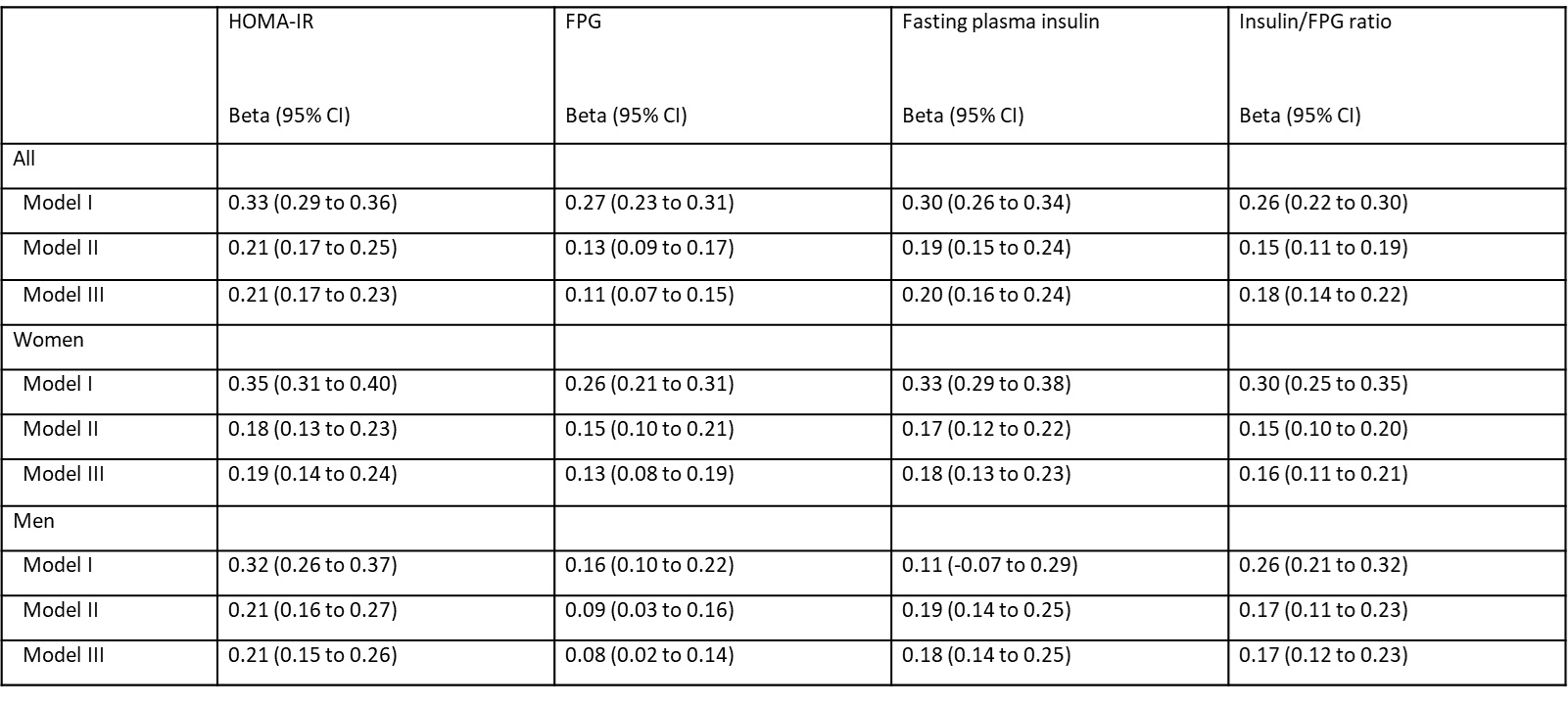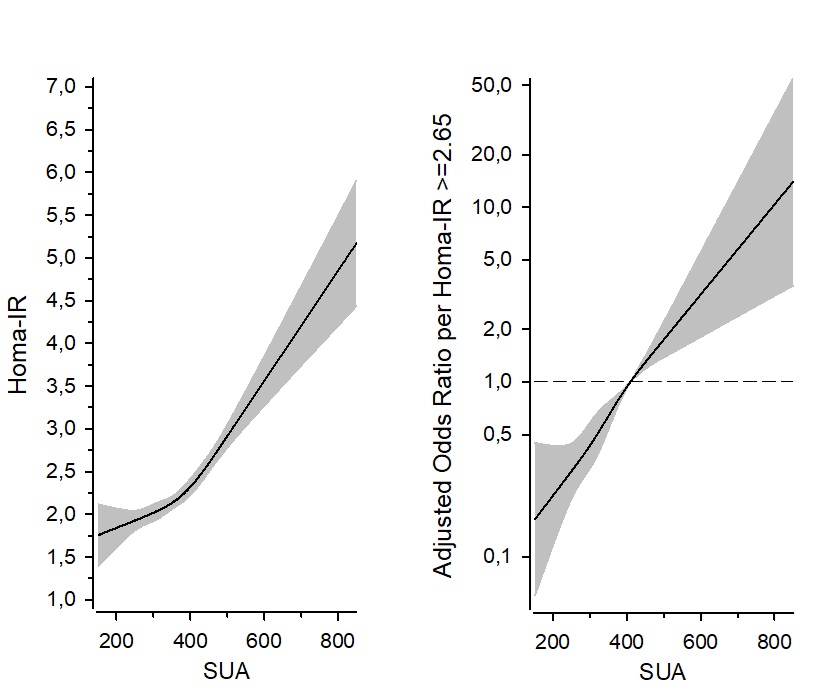Session Information
Session Type: Poster Session C
Session Time: 10:30AM-12:30PM
Background/Purpose: Disorders of glucose metabolism are well-known major contributors to morbidity and mortality. Elevated serum uric acid (SUA), a key precursor of gout attacks, is closely associated with insulin resistance syndrome and its cardiometabolic effects. In animal models it has been shown to induce pancreatic beta cell dysfunction. Elevated SUA is also linked to various other comorbidities and increased mortality. In this study, we examine the relationship between elevated SUA and fasting plasma glucose (FPG), insulin levels, and insulin resistance in an older Finnish adult cohort.
Methods: We utilized data from the GOAL (GOod Ageing in Lahti region) study, a prospective, population-based study of Finnish individuals aged 52–76 years. This dataset includes information on SUA levels, fasting blood glucose levels, other laboratory parameters, comorbidities, lifestyle habits, and socioeconomic factors. A total of 2322 non-diabetic individuals were included in the analysis. Subjects with SUA levels above 410 μmol/L (approximately 6.9 mg/dL; 75th percentile) were classified as hyperuricemic. We examined the relationship between hyperuricemia and FPG, insulin levels, and insulin resistance (HOMA-IR ≥2.65).
Results: We found statistically significant small to moderate relationships (Cohen’s standard for β values above 0.10 and 0.30 respectively) between hyperuricemia and FPG, insulin levels and insulin resistance across the entire study population, as well as within the female and male subgroups in unadjusted model and models adjusted for sex, age, body mass index, mean arterial pressure, cholesterol level, physical acticity, alcohol use and smoking (table 1). Higher SUA levels were associated with increased HOMA-IR values, with a significant rise when SUA exceeded 400 μmol/L (approximately 6.7 mg/dL), see figure 1. The probability of a subject having insulin resistance was linearly related to their SUA level (figure 1).
Conclusion: Hyperuricemia is associated with elevated FPG levels and insulin resistance. Managing both elevated serum uric acid and glucose metabolism disorders is crucial in clinical practice. However, the causative role of uric acid in the development of insulin resistance in humans remains uncertain. Future research should focus on clarifying uric acid’s potential as a causal factor in diabetes. Clinical trials are needed to evaluate uric acid as a target for preventing and managing diabetes.
HOMA-IR, homeostatic model assessment of insulin resistance; FPG, fasting plasma glucose; SUA, serum uric acid; BMI, body mass index; MAP, mean arterial pressure
HOMA-IR, homeostatic model assessment of insulin resistance; SUA, serum uric acid
To cite this abstract in AMA style:
Timsans J, Kauppi J, Kerola A, Rantalaiho V, Kautiainen H, Kauppi M. Hyperuricemia Is Associated with Higher Levels of Fasting Plasma Glucose and Insulin Resistance in Non-diabetic Subjects [abstract]. Arthritis Rheumatol. 2024; 76 (suppl 9). https://acrabstracts.org/abstract/hyperuricemia-is-associated-with-higher-levels-of-fasting-plasma-glucose-and-insulin-resistance-in-non-diabetic-subjects/. Accessed .« Back to ACR Convergence 2024
ACR Meeting Abstracts - https://acrabstracts.org/abstract/hyperuricemia-is-associated-with-higher-levels-of-fasting-plasma-glucose-and-insulin-resistance-in-non-diabetic-subjects/


